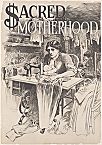| Entries |
| C |
|
Chicago Federation of Labor
|

|
Led by Irish immigrant John Fitzpatrick, the CFL built upon its base of craft unions to foster the organization of teachers, service workers, and factory operatives. By 1910, the CFL's membership of 245,000 represented one-half of the city's workforce, including 35,000 women.
Employing radicals such as Communist William Foster, the CFL pioneered in industrial organization techniques during the late 1910s. Through its influential newspaper and radio station, the CFL also spurred the political and cultural integration of Chicago's diverse workforce in the 1920s. The interunion cooperation achieved by the CFL in the packinghouses and steel mills, though ultimately unsuccessful, served as a model for future union efforts of the late 1930s. After the AF of L and the CIO merged in the mid-1950s, the Cook County Industrial Union Council, the South Chicago Trades and Labor Assembly, and the Calumet Joint Labor Council joined the CFL. At the beginning of the twenty-first century, the CFL still commanded a membership of over 500,000.
The Encyclopedia of Chicago © 2004 The Newberry Library. All Rights Reserved. Portions are copyrighted by other institutions and individuals. Additional information on copyright and permissions.